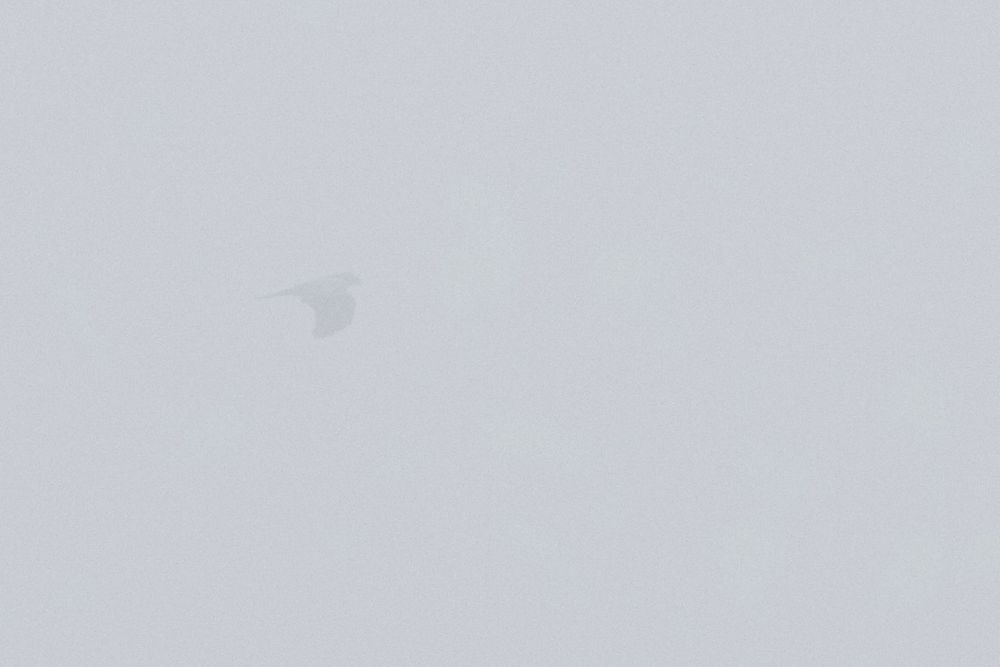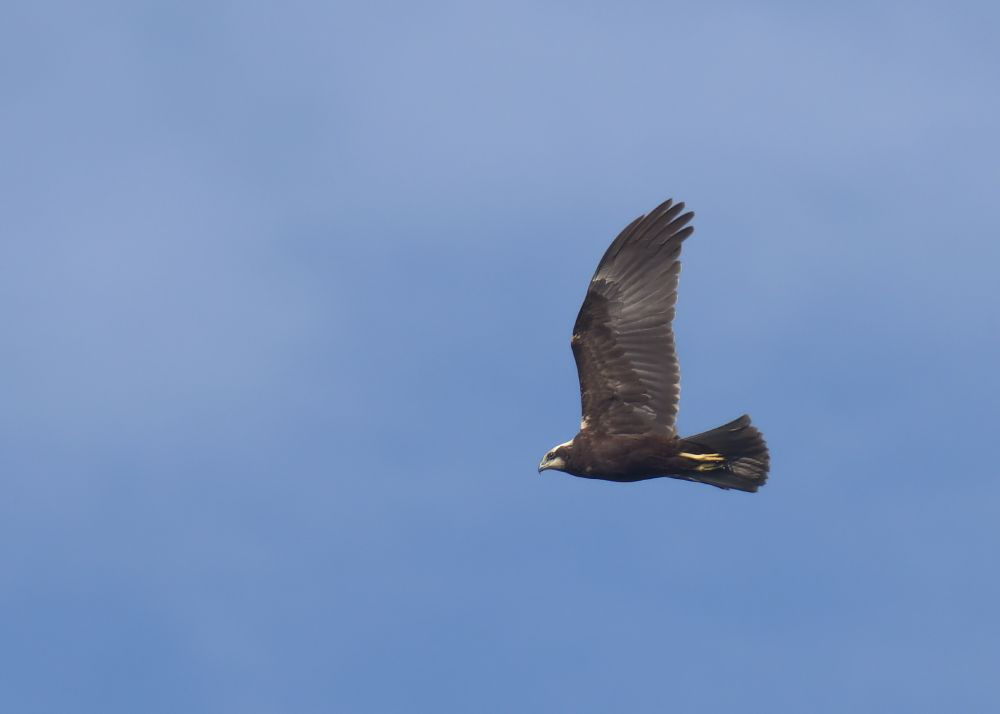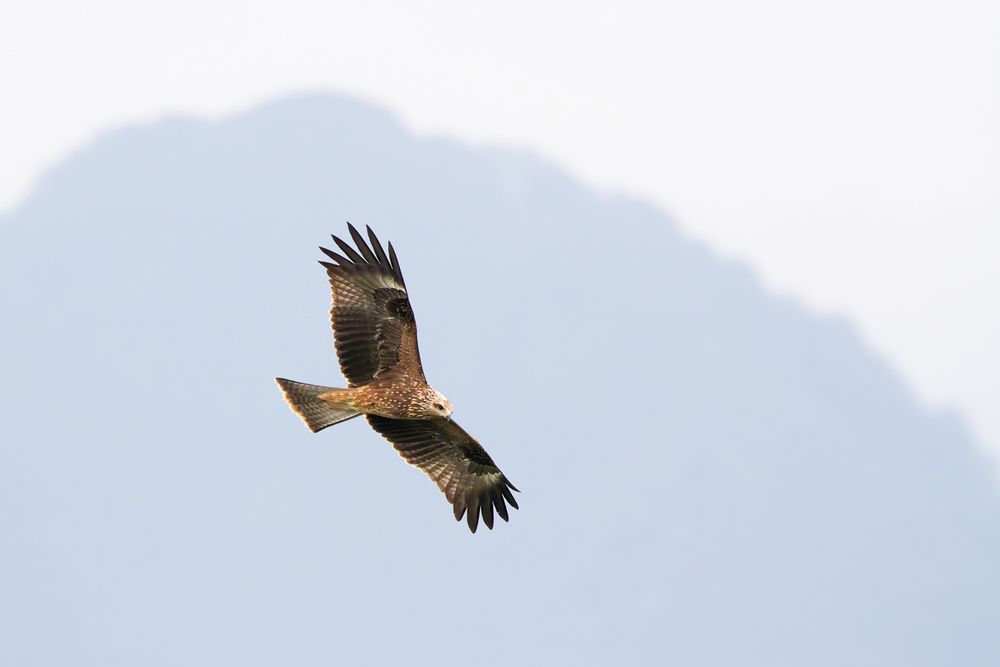
Dispersal, maturation and recruitment in a long-lived, intercontinental migrant bird | www.sciencedirect.co... | Animal Behaviour | #ornithology 🪶
28.10.2025 15:34 — 👍 14 🔁 8 💬 0 📌 0@tohar-tal.bsky.social
Birding | Ornithology | Migration & movement ecology | Conservation | Chairman @batumiraptorcount.org | Human-wildlife conflict | Policy Researcher @ FBE Noord-Holland | Graduated MSc Ecology @ IBED UvA | 📸 ➡️ flickr.com/photos/135764186@N07/

Dispersal, maturation and recruitment in a long-lived, intercontinental migrant bird | www.sciencedirect.co... | Animal Behaviour | #ornithology 🪶
28.10.2025 15:34 — 👍 14 🔁 8 💬 0 📌 0
Fig. 2. Maps of nocturnal bird migration across the Netherlands in spring and autumn, with the 100 km radius circles of the weather radars enclosing the onshore study area. Colors represent seasonal migration passage, converted from the original bird densities. Shaded areas mark grid cells for which over 25% of the input data, prior to filtering, were impacted by ground clutter. Migration passage in these regions may be compromised in either direction: overestimated due to remaining clutter artifacts or underestimated where terrain features partially obstruct the radar’s lower scanning angles.

Fig. 1. Flight altitude distributions (in m above sea level (asl)) of nocturnal bird migration for both Dutch weather radars at a coastal Den Helder and inland site Herwijnen. Bar length denotes the proportion of migration within the respective altitude range (50 m vertical resolution). Donut charts aggregate this further to coarser 200-m classes and display the proportion of migration occurring above 1000 m (patterned). Red highlights indicate the altitude range of onshore energy infrastructure in the Netherlands, which is generally present in the lowest 200 m of the atmosphere. Donut chart proportions do not sum to 100% due to rounding. The small inset map of the Netherlands shows the locations of both radars (solid dots) and the surrounding areas up to 35 km (circles) from which altitude distributions are aggregated.

Fig. 3. a, c Observed combinations of migration passage and mean wind power density, a measure of wind power potential, in North-Holland. Red circles represent average values for candidate sites and their size reflects the relative candidate site area. The grid reflects binned values of migration and wind power density, with color shading indicating the type of combination: orange = high migration passage, blue = high wind power density, dark browns and blues = both high. White lines indicate averages for wind power density and seasonal migration passage. b Spatial distribution of autumn migration (orange hues) and wind energy (blue hues) in North-Holland. Candidate wind energy sites are shown in bright red. The highest and lowest autumn migration passage sites are linked to their positions in a and c, emphasizing large differences between sites in autumn, but not in spring. Shaded areas mark grid cells for which over 25% of the input data, prior to filtering, were impacted by ground clutter. Migration passage in these regions may be compromised in either direction: overestimated due to remaining clutter artifacts or underestimated where terrain features partially obstruct the radar’s lower scanning angles.
To reduce negative impacts of #renewables (eg #windenergy) on migrating birds, we need to know *where* and how *high* they fly. Using weather radar, we mapped 6yrs of nocturnal migration over the Netherlands, revealing patterns we can use to avoid and minimize impacts:
doi.org/10.1016/j.je... 🧪🪶

A comic called halloween costume ideas for birders. In panel 1, labeled easy, there's a person labeled northern cardinal wearing a party hat, a beak, and red clothes, and a person labeled roseate spoonbill wearing pink clothes and a wooden spoon on their nose. In panel 2, labeled harder, there's a person labeled merlin sound ID wearing a big green circle with a microphone modeled after the button on the merlin sound ID app, and a person labeled hybrid green x blue jay wearing a complex costume with a mask and robe and hat modeled after a recently discovered hybrid bird. In panel 3, labeled challenging, there's a person labeled baltimore oriole nest wearing an enormous accurate woven oriole nest suspended from their arms and shoulders, and a person labeled african jacana carrying chicks with a hideous costume of long-toed bird feet hanging from their armpits. In panel 4, labeled hot, there's a person labeled high quality spotting scope who is shirtless and is wearing a spotting scope mask on their head, and a person labeled sexy owl pellet wearing an owl pellet top and bottom with a mouse skull on their head.
Halloween costume ideas for birders.
23.10.2025 12:26 — 👍 1560 🔁 428 💬 28 📌 33
Station 1 team today.

Station 2 team today.

The last bird of the season? Thas was a Steppe Buzzard of course! Photo by Bart Hoekstra.

The final season total!
It’s a wrap! 🎉
Today marked the final day of #BRC17! What an unforgettable season it’s been: records broken with countless surprises and memories made. All the details will be included in our upcoming autumn report, which will be released soon.
Keep an eye on our social media to stay up-to-date.

Steppe Buzzards moving through the cloudy Batumi bottleneck. Photo by Tohar Tal.

The Station 1 team.

The Station 2 team.

The team of coordinators at station 3 — for a change.
1.5 MILLION RAPTORS! 🦅🤯
For the first time in BRC history, we have recorded a staggering 1.5 million raptors in a single autumn season — a true milestone after 17 years of counting!
Read more here: www.batumiraptorcount.org/brc17/2025/10/15-million-raptors
#ornithology #RaptorResearch

Bird migration is changing. What does this reveal about our planet? – visualised
16.10.2025 08:32 — 👍 150 🔁 66 💬 3 📌 16
The latest wadertales blog (no. 151) describes how scoring moult from photographs can reveal moult season duration and how it varies between populations: wadertales.wordpress.com/2025/10/09/m...
#ornithology

Team at station 1

Team at station 2

Black Kite making it's way through the mist - though views, yet so rewarding! Photo by Bart Hoekstra.
Live from the field!
The 1,422,172nd bird — a juvenile Black Kite flying through the misty clouds — crossed our transect line this afternoon, making 2025 the BIGGEST year in BRC history!!
Stay tuned for more!

🚨 Master’s project!
Curious how birds find their way? 🧭🐦
Analyze decades of ringing data to study abnormal migratory routes and uncover what these deviations can reveal about the mechanisms guiding birds on their journeys. Drop me an email for details! #ornithology
www.vogelwarte.ch/de/wir/mitar...

If conservationists work from a compromised baseline, our notions of abundance, scarcity, and ecological wellbeing will keep getting defined downward:
"The researchers show that using the 1970s as a baseline tends to normalize an already severely degraded state."
phys.org/news/2025-10...

Today's totals! See our website for more details!

Steppe Buzzards. Photo by Filiep T'jollyn

After-count team photo - with perhaps the most beautiful rainbow ever seen in the background
170.000 RAPTORS IN ONE DAY!
After yesterday’s heavy rain and a quiet morning, today the sky exploded with Steppe Buzzards and large eagles! Continuing from 10 am until almost the end of the count.
At some point, we counted over 14.000 raptors in less than 20 minutes. THAT'S BATUMI!
#ornithology

Lesser Spotted Eagle - Photo by Eduardo Campos Wals

Lesser Spotted Eagle - Photo by Matthew Sprangers

Black Kite (left) and Steppe Eagle (right) - Photo by Matthew Sprangers

Lesser Spotted Eagle - Photo by Filiep T'jollyn
After the thrill of reaching the million, we went straight to the peak of diversity. The challenge of counting high numbers of birds slowly shifted into identifying the (relatively) fewer but more difficult ones: the large eagle species!
But they also brought a special guest along...👇
1/2

A screenshot of some text of a paper, with the following sentence highlighted: "One July evening last summer, while engaged in wheeling the baby (another one this time) through some tall grass in the corner of my yard, I noticed..." It continues "an Ammophila attached to a grass-stem in the peculiar..."
I love the way science used to be written. Is it necessary to know that the author was pushing his baby in a pram while making observations of insects? Perhaps not, but it provides delightful context, while assuming the reader is familiar with his previously published baby-wheeling-related work.
26.09.2025 13:24 — 👍 167 🔁 33 💬 7 📌 3
the 5 study species: Dunnock, Northern Wheatear, European Robin, Common Redstart, Garden Warbler
NEW PUBLICATION on stopover ecology of Songbirds during spring migration: After packmor et al. 2020 (Mov Ecol) found that trans-Saharan migrants react differently to weather for migratory departure, we aked ourselves, whether this is also valid for spring migration? 🐦
a thread 🧵 on 7 hypotheses:



A dramatic end for an ambitious Spoonbill. Yday morning LAYLA crashed into the ocean just offshore Madeira, 56h after departing from the Wadden Sea. She rested barely 7h even though she found nice Spoonbill hotspots on the way. Poor choices... #ornithology
www.globalflywaynetwork.org/tracks/speci...
That'd explain it better yes ;)
25.09.2025 08:51 — 👍 0 🔁 0 💬 0 📌 0
Crashed into the ocean... After being attracted to/trying to land at some kind of fish farm?
Very sad, of course, but secretly hugely interesting how this ended so badly, just less than a km offshore.

Marsh Harrier. Photo by Nikolina Bukovac

Short-toed Eagle and Black Kite. Photo by Nikolina Bukovac.

Greater Spotted Eagle. Photo by Nikolina Bukovac.

Where are the birds? Somewhere up there in the blue sky!
A true Bluesky — filled with raptors!
After days of rain, we were greeted by a bright, blue, cloudless sky this morning! The result? Thousands of birds and a high species diversity.
With the main message: the eagles are coming!
Stay tuned for more! For daily totals: www.batumiraptorcount.org/data




The www.BirdEyes.org team is thrilled to announce a new paper by Mohamed Henriques showing how Spoonbills change space use over the course of their summer stay in the eastern Dutch Wadden Sea. After breeding, many adults converge in the Lutjewad area. #ornithology
www.birdeyes.org/lutjewad-amo...

Are animals randomly distributed in the air, or is there a structure to where and when we find them? In our new paper we outline factors that shape habitat use in the air, from abiotic structure to biotic interactions. A lot of fun discussions behind this one! 🦅🦋🦇🌬
www.cell.com/trends/ecolo...


This achievement was only possible thanks to our amazing and hard-working team – counters, trainees, coordinators – and our wonderful host families for their endless hospitality.
Check out our daily counts and news flashes here: www.batumiraptorcount.org/data
2/2
Here we go!!
17.09.2025 15:20 — 👍 1 🔁 0 💬 0 📌 0
#ornithology
www.nature.com/articles/s41...

Large kettle of Honey Buzzards

A single Honey Buzzard flying low through the bottleneck

A stunning juvenile Black Kite

The Honey Buzzards keep on coming!
With another 50K+ counted today, we’ve now passed half a million HBs this season! Rising numbers of Black Kites — as their peak is still ahead — pushed our overall total past
700K! And it’s not just the bulk species 👇
#ornithology
📸Eduardo C. Wals
1/2

Foremost, we found it an exciting experience to publish our scientific debate in such a public manner, and thank @moveandconserve.bsky.social and co-authors for the constructive and cordial discussion!
Exciting times ahead — only together can we connect birds, people & places across the flyway!

A new study led by @moveandconserve.bsky.social used GPS tracking to test the monitoring potential of Eilat and Batumi.
An invaluable step toward linking counted birds to their origins, but we found it needed some elaboration from a migration count perspective!
Our commentary: tinyurl.com/nnbzu7kc

So they wrote a comment www.sciencedirect.com/science/arti...
They raised some good points, improving our initial work, and allowing us to address a few more aspects of our work
@barthoekstra.bsky.social @tohar-tal.bsky.social @wmgvs.bsky.social
#conservation #ornithology 🧪🐾🌎

Science as a conversation:
In January, we published a paper about migratory bird counts www.sciencedirect.com/science/arti...
For different reasons, we did not include the managers of the bird counts. But the @batumiraptorcount.org people had some important comments
#conservation #ornithology 🧪🐾🌎
Some asked if we had a ‘beef’ with Efrat et al. — quite the contrary! Their elegant work merited a proper response, so we wrote a letter to share our view on their work and long-standing Qs about migration counts.
If the khachapuri doesn't get to us first, we still fit together through one door! 😁